Foreword:
At the beginning of 2017, I first contacted Hannes Reiterer after I heard about his orchid culture in Styrofoam strips (bomba noodles). He sent me a sample of the styrofoam strips and I potted about 30 paphiopedils and other orchids in it. All orchids grew really well in this new substrate in 2017 and so I planted all my orchids in this substrate at the beginning of 2018. To date (2023) I have stayed with this plant material - it only needs to be repotted if orchids grow beyond the edge of the pot or upwards. However, I was only able to find a shredder with a cutting width of 4 mm - the somewhat bulky Styrofoam strips are covered with a thin layer of pebbles.
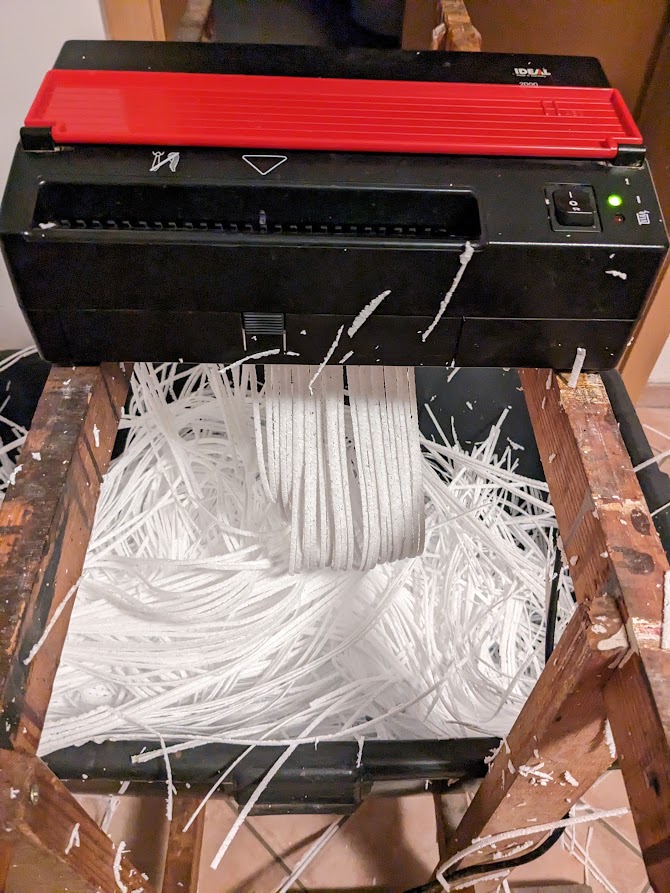
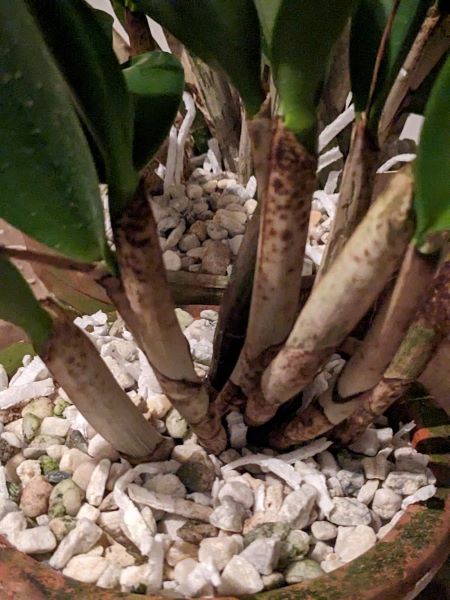
At my request, Mr. Reiterer wrote an article on this interesting topic, which was then published in the Orchideenjournal (Association of German Orchid Friends) in spring 2018:
A somewhat different Paphiopedilum culture in the small greenhouse - Hannes Reiterer
Short introduction: orchidlover from Vienna, 63 years old (unfortunately deceased in 2021), who bought the first orchid 41 years ago and built the first greenhouse after two years of window sill cultivation. Today, around 1600 orchids are cultivated in two greenhouses (warm house 43 sqm, cold house 28 sqm), my wife also does botanicals, her bonsai collection consists of 200 trees, some of which are very old.
Anyone who has been caring for orchids for 41 years has tried “everything”. All literature is devoured, tips from professionals are meticulously put into practice, the successes were rather modest. Everything was questioned until the realization matured that many things are different in the large-capacity greenhouses of commercial horticulture than in a small greenhouse with limited airspace. Cultivation parameters such as light, irrigation water quality and temperature are irrefutable constants that do not differ in the two types of greenhouse.
The construction of a greenhouse is financially associated with large expenses, and there is usually no money left for air conditioning. The culture room often gets too hot in summer, heating costs are saved in winter, and the humidity is then in no man's land. Failures are inevitable. The first plants should only be cared for when sufficient air conditioning in the culture room is guaranteed. Success will then follow.
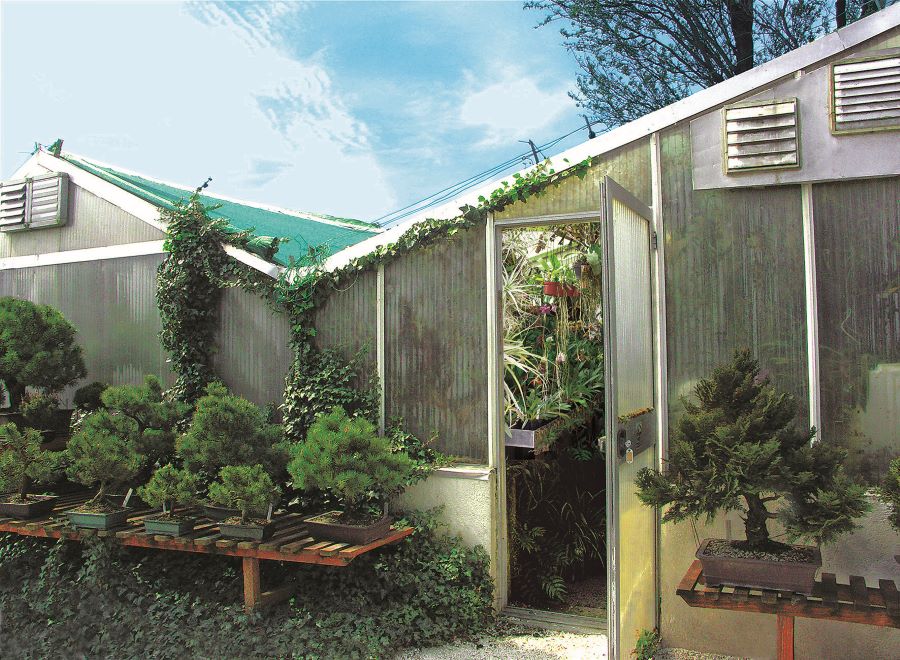
Encouraged by this, the orchid virus soon breaks out completely, the plants are becoming more and more, the last places are filled with hanging cultures. When watering, the plants standing on the tables become waterlogged, fungal diseases and bacteriosis are the logical consequence. The plant material no longer dries out and the roots begin to rot. To minimize these problems, transplanting is carried out more often, the planting material is mixed more openly, the amount of work increases significantly.

From observations at the natural locations I knew that in nature after a downpour the wind blows everything dry again within a few hours. Unfortunately, air circulation is neglected in most cultures, Paphiopedilum care without sufficient air circulation is hardly successful. Bacterial diseases such as Erwinia and Pseudomonas are the result of overhead watering. The plants should always go dry at night. The aim is 20-40 times the air circulation per hour according to the formula room content x 20-40 = cubic meters per hour fan output. The air circulators are installed above the tables at a slight downward angle. It is better to spread the required power over several smaller devices to reach all angles. Using a speed controller, the power of the devices can be increased after watering so that the leaves and hearts dry faster. For continuous operation, the performance is slightly reduced again. In my 43 square meter warm house, seven fans run continuously with a total output of 5000 cubic meters per hour. They are only switched off in summer when the forced ventilation ensures sufficient air movement.
The house is not ventilated via ventilation windows, since the warm air and the humidity escapes to the outside, but with four thermostat-controlled forced ventilation fans in the gable. At the same time, three fans blow cool, moist air into the greenhouse from a cloud chamber attached to the greenhouse. Coupled with a movable 70% shading, the indoor temperature can be maintained at 26 degrees on most summer days. Paphiopedilums slow down their growth from 26 degrees, at even higher temperatures the stomata close and growth stops altogether.
Sufficient air circulation also helps to save on heating costs, since air stratification is prevented (warm air rises, it is 2-3 degrees less on the tables).
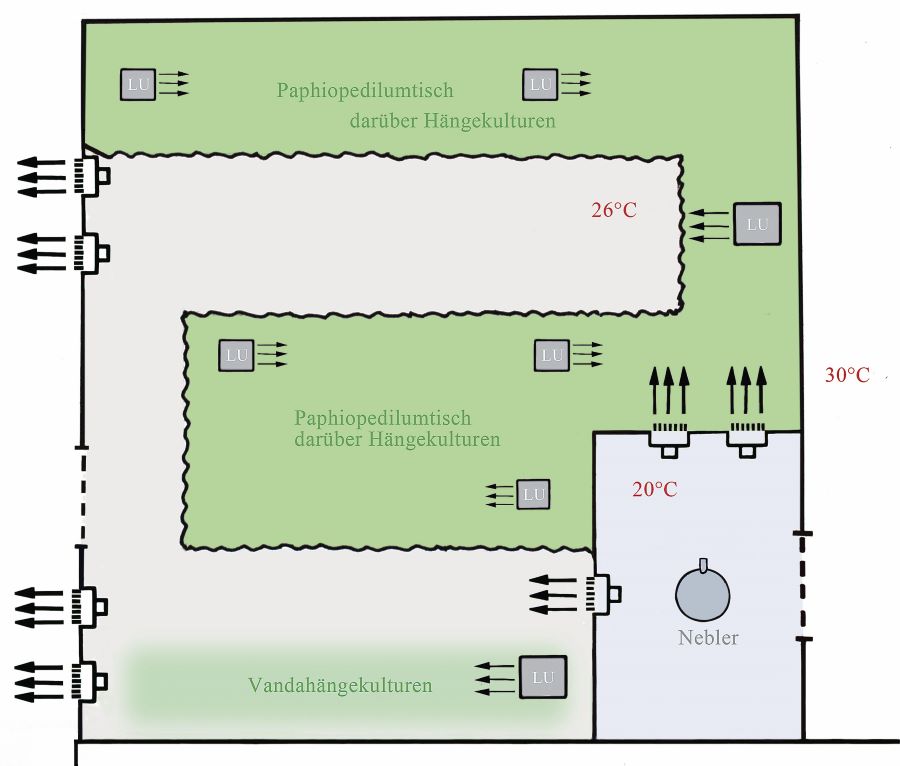
The figure documents the system of forced ventilation, cooling and air circulation. In the past, the foggers were right in the house, which was very good for block cultures, but the permanent moistening of the leaves only led to rot and bacteriosis with Paphios. Even switching off the devices in the early afternoon did not solve the problem. The use of fog nozzles brought similar failures. In my system, only cool and moist air flows into the greenhouse, while the leaves and shoots of the plants remain dry.
When watering in a greenhouse that is crammed to the last corner, only the watering spray comes into question. Single pot irrigation is also not possible, the water drips from the hanging cultures onto the plants below and you are faced with the choice of either letting the hanging cultures die of thirst or drowning the table cultures.
To counteract this, the substrate mixtures became more and more open and consisted of many different components. In my opinion, the orchid substrate should be homogeneous and consist of only a few different components. Put yourself in the shoes of a root tip: it's March and they're starting to grow happily. You'll come across a piece of moss (pH 4), a centimeter further Styrofoam (dry, pH 7), and further a little further pine bark (wet, pH 6). At least now they have had enough and don't give a damn about continuing to grow.
During the annual transplanting (this is a must for Paphiopedilum in conventional bark substrates), I noticed more and more often that the rooting in the Styrofoam drainage was always very healthy and lush, although Paphis tend to form only a few roots. The higher the polystyrene layer in the pot, the more healthy roots there were. Attempts with pieces of polystyrene based on the orchid chips already in use at that time were unsatisfactory. A short time later, Gerhard Bomba's book "Orchideenkultur im Haus" was published, and what the man said was just great. There should be no more problems with waterlogging and mineralization when using his suggested Styrofoam substrate. Unfortunately Styrowool is not commercially available. It was suggested to use 2mm thick, unlaminated styrofoam wallpaper as the starting material, which would be cut into 2-3mm wide strips in a paper shredder. The cutting width should be strictly adhered to, as it guarantees the best water flow (capillarity) of the plant matter. The length of the threads can be adjusted by tearing the respective pot size. The material is usually electrostatically charged when cut, but this effect disappears as soon as it is wetted with water (+ wetting agent).
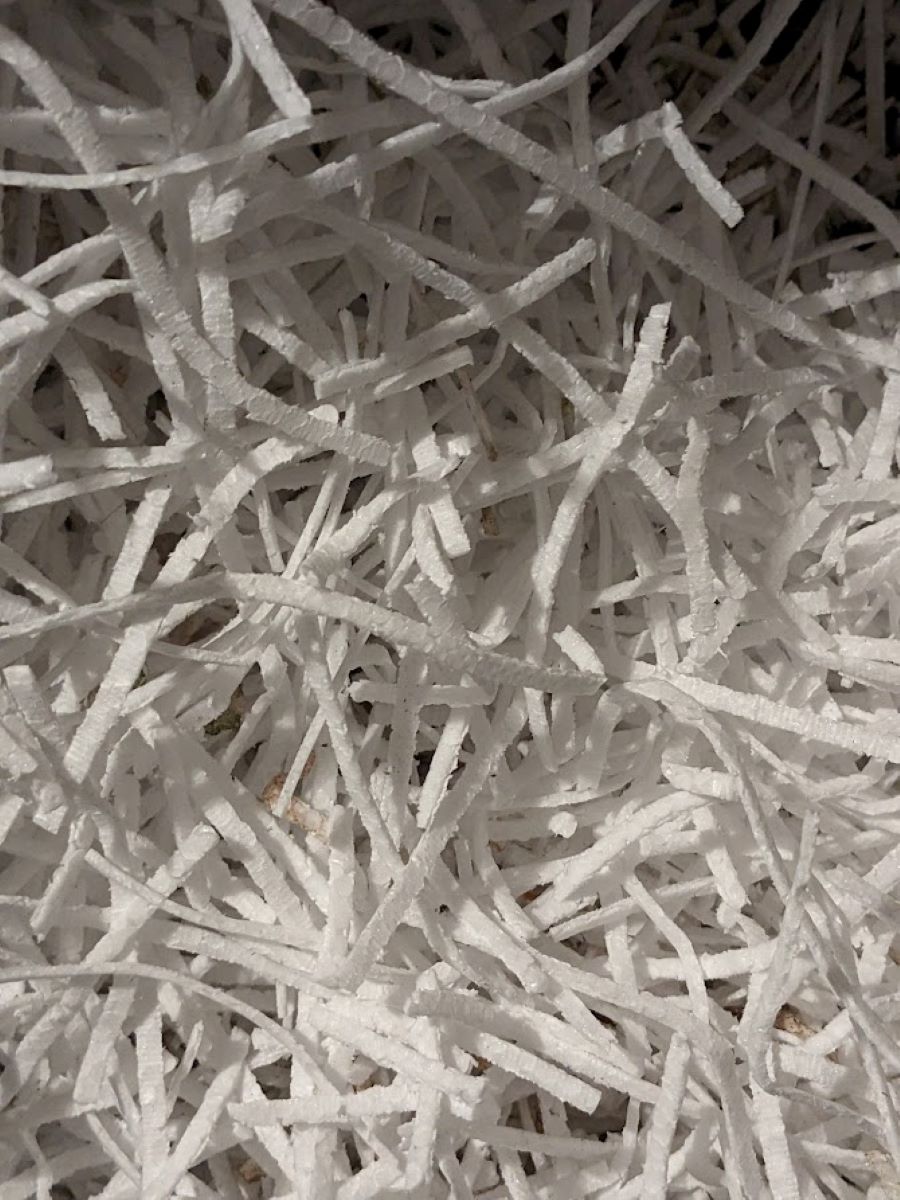
Styrowoll does not contain any nutrients, does not absorb any and small residues of nutrient salts on the surface are completely washed out when flushed with pure water. The culture parameters conversion, watering and fertilization must be adapted to the new plant material. The best time to switch to the new plant material is of course early spring and early September, when Paphis can usually form new roots again. You should only replant when new shoots or roots are visible. Young plants without a seasonal rhythm can be transplanted at any time. First you remove the old plant matter and cut the roots back to a length of 4-6 cm, they would not survive in the completely different substrate. The remaining root stumps will soon sprout again willingly. The interfaces are best disinfected with cinnamon or charcoal powder, and the new plant material is spread between the roots so that they are in the upper part of the pot, where they give the plant support but can dry off quickly so that new roots can form soon. You shouldn't pot too loosely or too tightly, the roots sit very firmly in the pot, even with the short roots. Heavy watering is only done after a few days until the cutting points of the roots are scarred. Frequent light spraying and heavier shading will avoid excessive water loss. If all climatic factors are optimal, the plants should after six! weeks to be rooted.
In order to increase the stability of larger Paphis, place a few large pebbles on the bottom of the pot. In the case of plants cultivated in conventional bark substrates, only the smallest pots should be used; in Styrowoll you can easily size them for growth over several years without having to worry about losing roots.
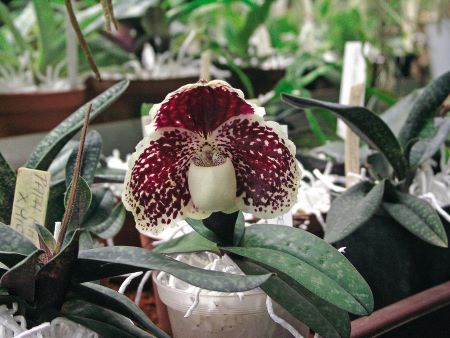
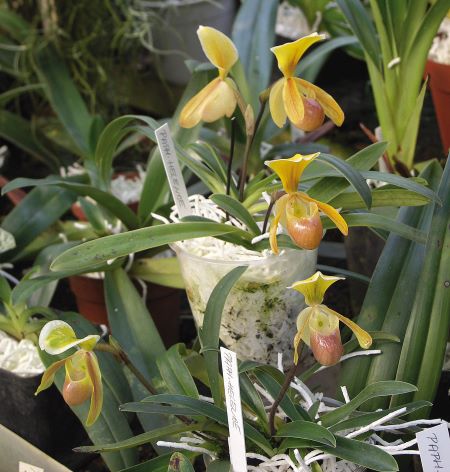
Since Styrowoll neither absorbs nor releases salts and does not decompose, it only needs to be moved over the next few years if the vessels are too small. Only opaque plastic pots are used, a few indicator plants can be cultivated in transparent pots to check the moisture level of the root ball. All additives degrade the properties of this plant substance - covering the surface with sphagnum reduces air exchange and causes the plant to rot.
In the Epiflor process (G. Bomba), the good properties of Styrofoam are mainly used for epiphytes in the form of planks or shaped pieces with spray nozzle irrigation. In amateur greenhouses, the technical effort would be too high. The styrofoam blocks I use are modified in such a way that the surface is roughened with a coarse rasp, and a fork is used to poke a number of holes in the surface of the block, in which water collects and supplies the plants. Styrofoam pieces modified in this way hold the water longer and grow algae and moss over time, which further simplifies maintenance.
Block plants that have grown for ten years or more on conventional materials and have lost all their roots when the cork oak bark decomposes due to tannic acid, etc., can usually no longer be saved.
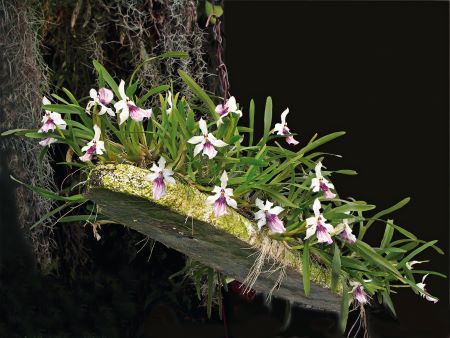
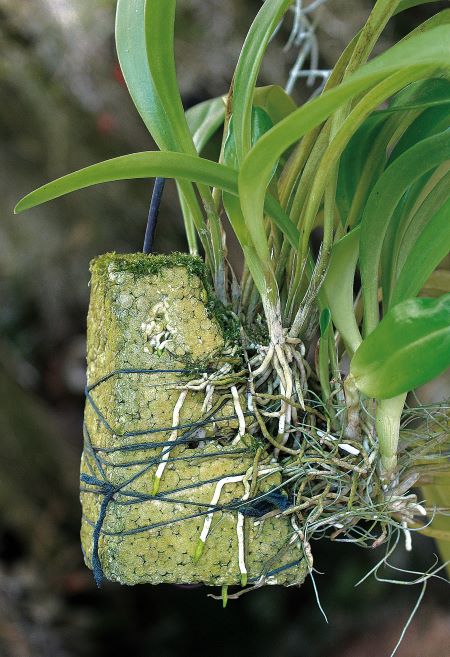
Back to the Paphiopediles: When using polystyrene-based plant materials, the hardness of the water is not that important, since polystyrene is not decomposed by either calcium or magnesium. Ca and Mg promote the strength of the tissue and the variegation of variegated species, especially in Paphis, and also improve root growth. The styrofoam substrate does not need to be limed because it is rinsed out during the first watering. As a replacement, pour a lime milk solution several times a year (1-2g algae lime/l water).
I use Viennese tap water almost exclusively (240 microsiemens, pH 7.4). The pH is lowered to pH 6.5 with dilute phosphoric acid. In addition, hydrogen peroxide is used to sterilize and enrich oxygen. Watering is done overhead with a fine watering spray a maximum of 2x per week in summer, in winter at most 1x per week and in the transitional period water is given even less frequently. When the sun is shining, spray vigorously every morning during the growing season.
This plant substance does not contain any nutrients and does not specify any, so the diet of the orchids is of particular importance.
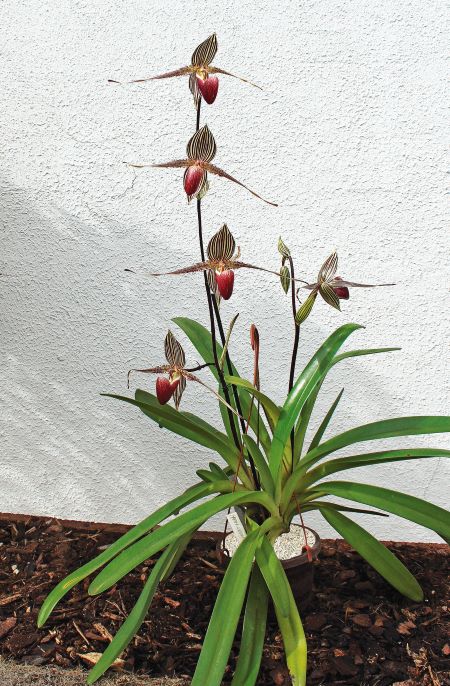
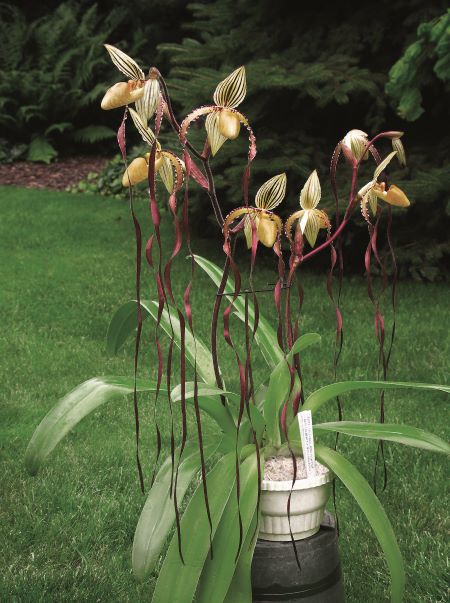
In mixed collector's collections, the concentration of nutrients can only ever represent a compromise, a Paph. canhii with a leaf span of 10cm is fertilized in the same way as Paph. kolopakingii with 100cm. Since Styrowool has no buffering effect and any concentration of salt will act on the roots at full strength, the concentration should not exceed 600 microsiemens. Only mineral fertilizers are used. Organic fertilizers are not recommended, they first have to be processed by the soil bacteria and converted into ions, which is not possible with sterile plant matter because there are too few bacteria.
Bomba recommends fertilizing every third watering during the growing season, otherwise the nutrition of the plants hardly differs from that in conventional bark substrates. Bark only requires a higher percentage of nitrogen, Styrofoam does not.
I first wet all plants with pure water before dousing the fertilizer solution with excess water. In order to support root formation in the spring, phosphorus-rich fertilizers are used a few times, otherwise mainly balanced nutrient solutions (20:20:20) are used, alternating with slightly nitrogen-rich fertilizers. From September I fertilize with potash-phosphorus in order to reduce to zero from November.
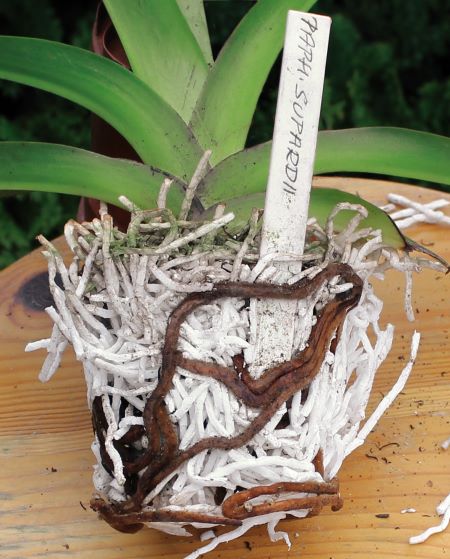
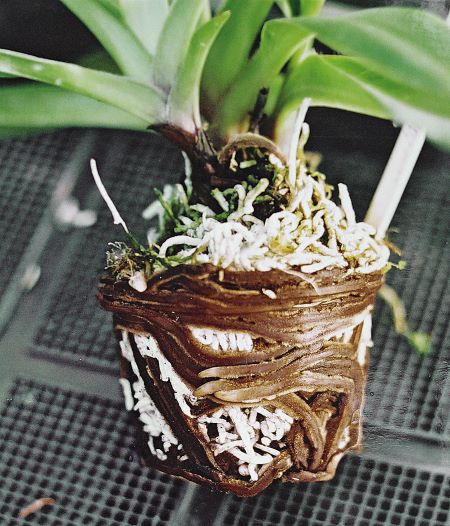
Strong air circulation in combination with permeable substrates largely prevent fungal diseases, it is sprayed twice a year with a broad spectrum fungicide. The use of cinnamon to disinfect interfaces has proven itself. Every three months I sprinkle all plants with cinnamon powder and then, when watering, spread the cinnamon into the base of the leaf axils and into the heart of the plants, which largely prevents the shoots from rotting. Well-nourished plants are rarely attacked by animal pests, so preventive treatment is not necessary. Spraying is only used when infested with systemic insecticides.
Switching from "natural" plant materials to 100% styrofoam requires some courage, because it contradicts the "close-to-nature" culture of plants.
Conclusion: The additional effort involved in casting is put into perspective by the fact that it is only relocated when the vessels have become too small. The planting material is easy to make, inexpensive, and reusable if you wash it off and rid it of algae after years of use. Root damage due to waterlogging and excessive salt content in the substrate are almost impossible. Due to the strong exchange of air and strong air circulation, the foliage of the plants dries off quickly after watering, even if they are in close proximity, bacterial leaf rot and fungal diseases are largely prevented.
Many roads lead to Rome in orchid culture.


